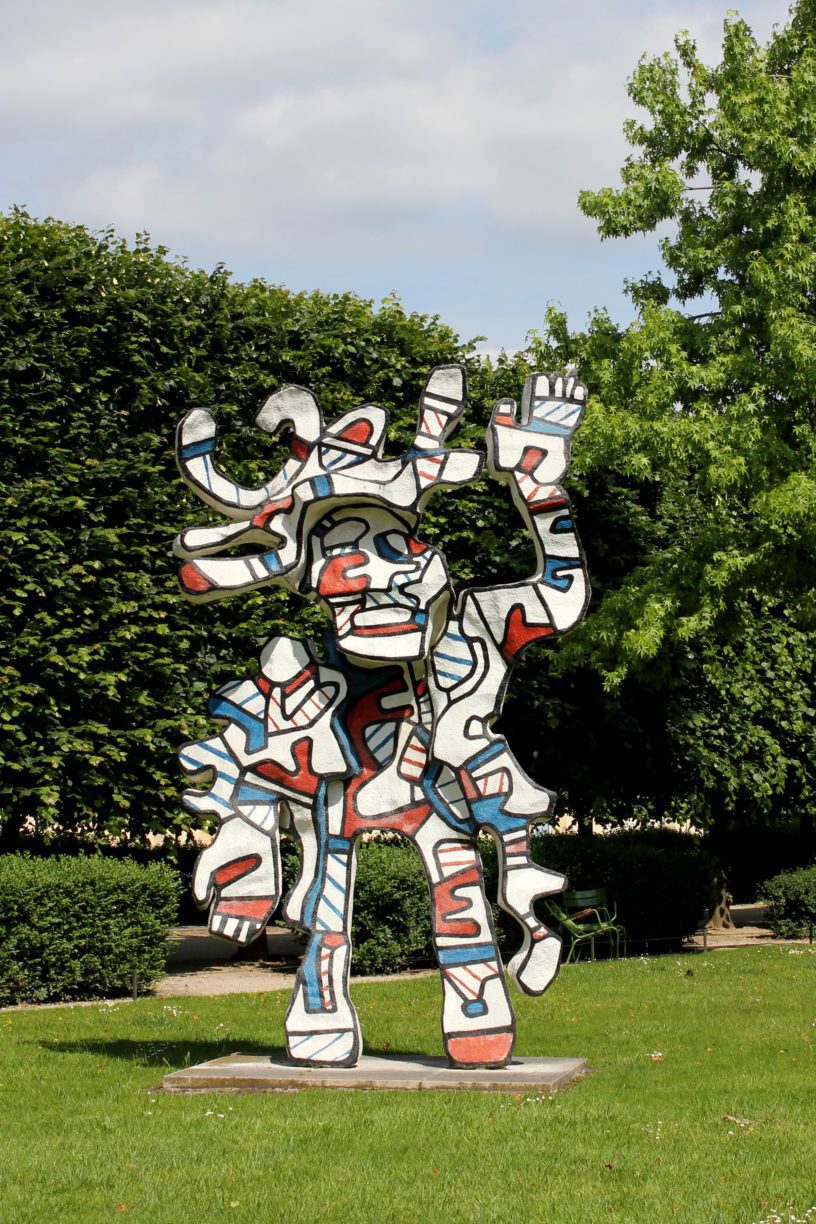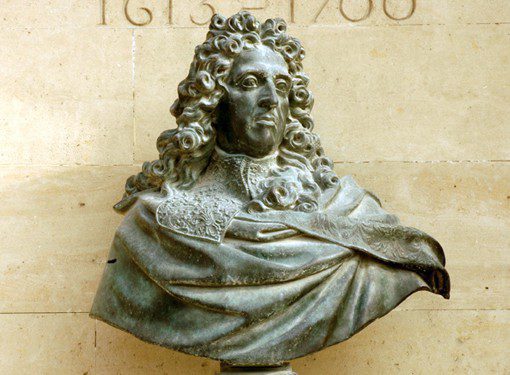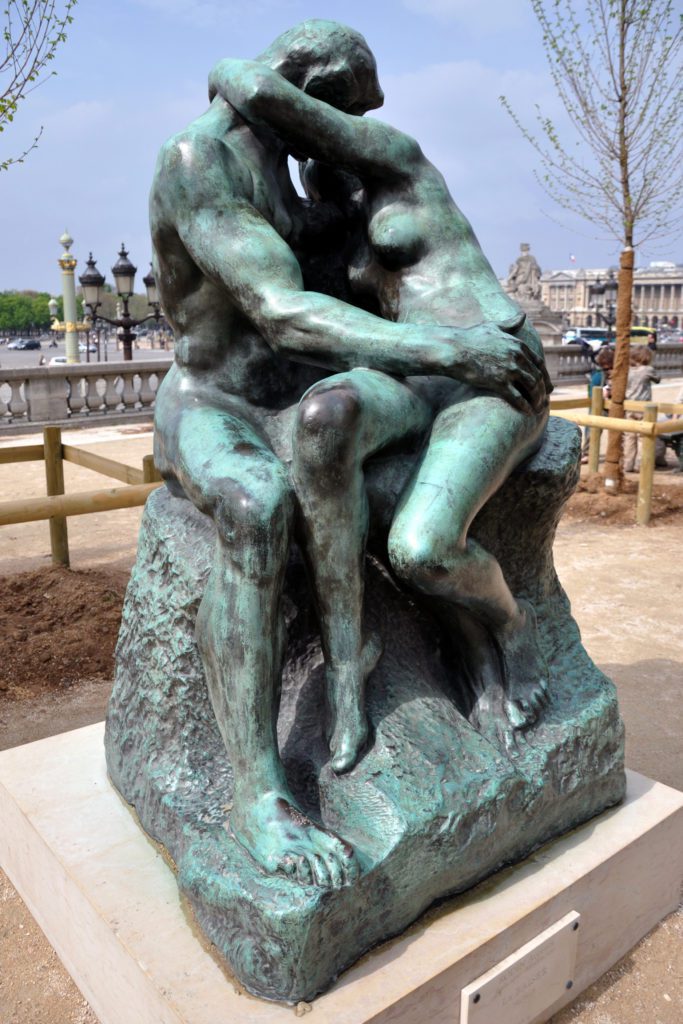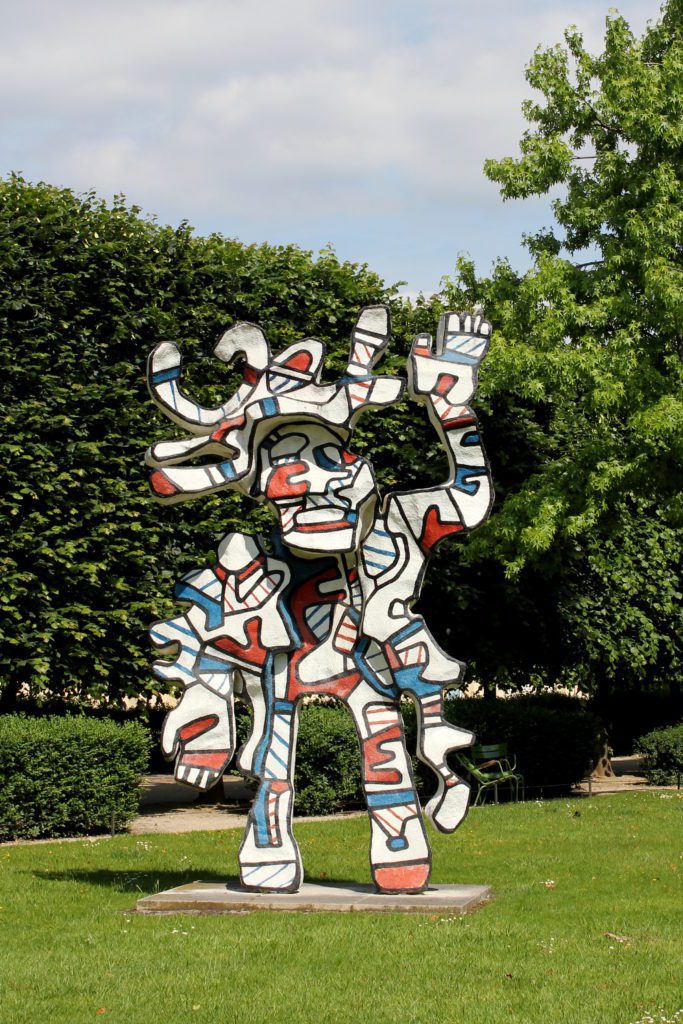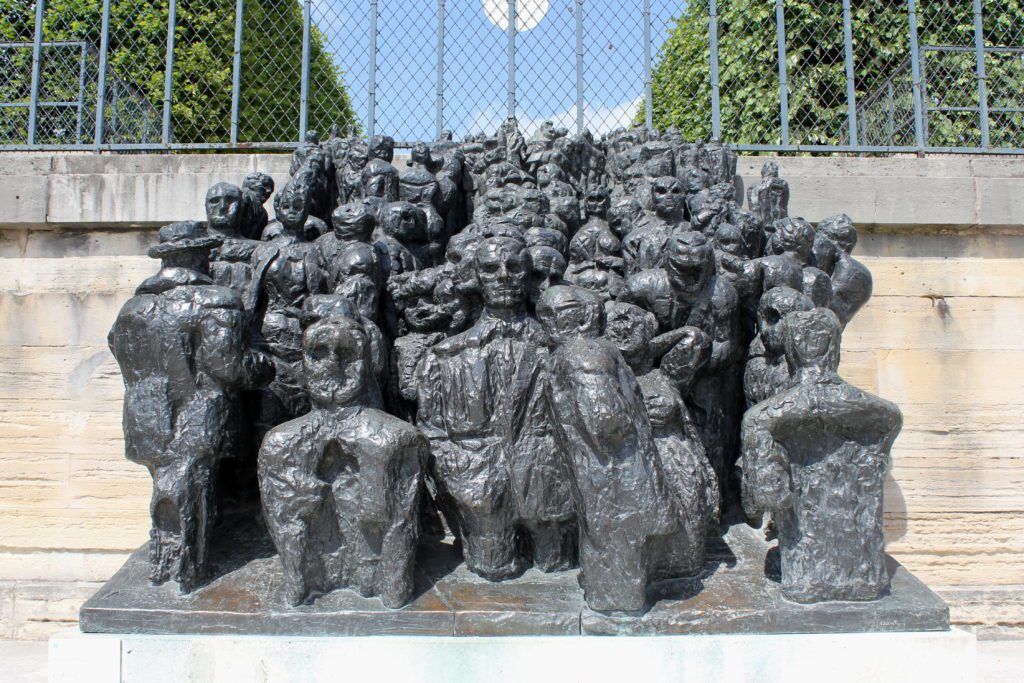Discover the Statues of the Tuileries garden
Between Le Louvre and Les Champs-Elysées, the Tuileries garden is crossed by millions of persons every year. With its chairs around the pools, its bars and restaurants and its theme park in summer, it is the perfect place to relax after a long visit into the museum. What strikes me is that really few people pay attention to the many statues inside.
The Tuileries garden is one of the biggest outdoor museums of the statues with an art collection ranging from the seventeenth century to the twentieth. The garden is run by the Louvre museum.
This collection started with the burning of the Tuileries palace, royal palace and symbol of the French monarchy, during a revolution in 1871. The palace was at the east side of the garden, connected to Le Louvre. Some of the statues that were inside, or their replicas, are exhibited in the garden. In 1964 the Minister of Culture André Malraux imposed some statues by Aristide Maillol.
For the new millennium the sculptor André Kirili decided to propose a selection of works from the twentieth century. This art pieces became accessible from the public, including the one that would not go to the museums. The production of some of the greatest sculptors are exhibited here: Auguste Rodin, Henry Moore, Jean Dubuffet among many others.
I invite you to discover the statues of the Tuileries garden with me. We will follow an itinerary starting at the west entrance of the garden situated on the place de la Concorde.
The bust of Le Nôtre by Antoine Coysevox
Pass the railings and look right. In a niche on the left a bust of André Le Nôtre. He is the gardener who designed the Tuileries Garden.
Le Nôtre is the main representant of the French Formal Garden of the seventeenth century. His idea was to show the mastery of man over nature. This control is displayed by the well-trimmed alleys of trees, the strange baroque shape imposed on some plants of the parterres and the geometrical shapes of the pools.
Gardener of the king Louis XIV, he designed the royal gardens, like the Tuileries, and the gardens of the high-nobles in the countryside like Vaux-le-Vicomte and Chantilly. His masterpiece is the garden of Versailles.
However, it is in the Tuileries garden that he started his career, living himself with his family in the house of the gardener. This is where he became recognized.
He also got the idea to extend the perspective of the garden in the nearby forest. The walk planted with trees that he created is today the avenue of Les Champs-Elysées.
As a very important courtier, who greatly contributed to the glory of Louis XIV, he was represented in this bust by the main sculptor of the king, Antoine Coysevox. He is represented as an old, respectable man with the curly wig fashionable at his time.
Once you passed the bust, you arrive close from a basin designed by Le Nôtre. It is called the octagon because it has eight sides. You will notice two ramps on the side. Together they form like a horseshoe.
Take the right one and go in front of the entrance of the Orangerie museum. Then turn around, on the side of the balcony, and get closer from this green statue.
The Kiss by Auguste Rodin
The Kiss, Le Baiser in French, is probably the most famous statue exhibited in the garden. The piece presented is a bronze version of the original. The famous French sculptor Auguste Rodin conceived it as part of his portal The Gates of Hell.
It illustrates a moment of the Divine Comedy written by the Italian poet Dante Alighieri in the fourteenth century.
A noble woman Francesca da Rimini falls in love with the brother of her husband, Paolo Malatesta, which will result in the murder of the two lovers. They are condemned to wander in Hell for the eternity.
But how strange it is to represent this moment of happiness and sensuality in a representation of eternal torment! That is why Rodin chose to remove it from the portal and to isolate The Kiss. This universal and charming theme brought the statue instant fame.
Auguste Rodin was the contemporary of the impressionist painter Claude Monet: they were both born in November 1840. They were friends, exhibited once together and both revolutionized the art world.
Perhaps that explains why the statue of Rodin is exhibited at the entrance of the Musée de l’Orangerie. It is the museum where visitors can contemplate the huge paintings of the waterlilies, the Nympheas. They were offered by Monet to the French state.
Lovers of Rodin can cross the Concorde bridge to reach the nearby Rodin museum.
Before you go, don’t forget to take a picture of the stunning panorama visible from the balcony! From left to right: The Invalides, the Palais Bourbon (National Assembly), the Petit Palais, the Obelisk of La Concorde, The American Embassy, the Hotel Crillon and Hotel de la Marine.
After, come to the other side of the Orangerie and take the little stairs on the left. Halfway on these stairs, another beautiful statue awaits you.
The Reclining Figure by Henry Moore
Henry Moore was a reknown British artist who received the international prize of sculpture at the XXIVe Biennale of Venice in 1948.
In 1951, the Arts council of Great Britain commissioned the best British sculptors to commemorate the 100th anniversary of the World Fair of 1851 in London.
The Reclining Figure is characteristic of the style of the artist who is halfway between figurative art (the representation of reality) and abstract art.
On a work like this one, there is no “correct” interpretation to find. Your personal interpretation is the right one: what do you see? What images do you associate with the sculpture as a whole and then with the different parts of it? This type of statue requires that you take your time to look at it.
If possible, discuss about what you see with someone else: your vision of the art piece will get enriched by all the associations that will come to your minds.
When you have finished, walk to the other side of the octagon and take the other ramp of the horseshoe. Next to the Jeu de Paume museum you will see a very colorful sculpture.
The handsome costumed man by Jean Dubuffet
The sculptor Jean Dubuffet had been exhibited for the first time in The Jeu de Paume museum. It is only fair that his work was put next to it in 1998.
It is the only statue in epoxy in the garden. It brings some originality among the bronze or plaster statues. The official title is “Le bel costumé”, the translation is mine. It is a 4 meters high statue that vaguely resembles a human being.
The method used by the artist is original. He wanted an expression of his unconscious. While he was on the phone, he let his pen scribbling without thinking about it.
Jean Dubuffet did not want his work to be understood like a riddle to solve. Like for the Reclining Figure, there is no “correct” interpretation. This way his art pieces could continue to intrigue and disorientate, to remain questions and not answers.
You can go to the other side of the Jeu de Paume (on the east) and go down the stairs.
The crowd by Raymond Mason
Raymond Mason was a British sculptor who lived in France where he befriended Giacometti. The crowd is a work presented in Paris in 1968. The version presented in the garden was installed in 1987.
There is something disturbing in this group of characters. They have no eyes and their expressions are difficult to identify. Their facial traits are sometimes barely sketched. Who are they, what do they think, what do they feel? Raymond Mason questions the anonymous crowd of today.
You can get under the shades of the tree at the left of the garden. There you will see two standing bronze statues, a man and a woman.
Apollon and Jeannette by Paul Belmondo
After all these expressive or abstract statues, do you feel like going back to more realism for a while? Well, Paul Belmondo (1898-1982) felt the same.
In the twenties he defended of a neo-classical style: refined and smooth statues inspired by the Antiquity and the Renaissance. I called his work realist in the former paragraph, even though it can be said that these bodies are idealized. They embody beauty, an ideal of perfection.
Paul Belmondo had a troubled career. He was accused of being a collaborator to the Nazis during the Occupation. He was mainly reproached his participation in an artistic trip organized by the Nazis in Germany. He was deprived from the right to sell and exhibit between 1945 and 1946 even though he energetically claimed his innocence.
When he died, his son Jean-Paul Belmondo, a very famous French actor, gave the statues to the garden.
Now, take the main alley for a few meters and keep looking on your right. Just after the crossing with the wide Castiglione Alley, you will see what seems to be the roots of a big uprooted tree.
The tree of the vowels by Giuseppe Penone
Even at a ten meters distance, you will think you have a real uprooted tree in front of him. Did a storm devastate the garden? Did the gardeners neglected to remove the tree?
It is only when you get very close that you realize that this is a bronze statue. Giuseppe Penone chose this material for its ability to imitate wood when it is oxidized.
Unlike the others, this art piece was commissioned for the Tuileries Garden by the Minister of Culture.
Giuseppe Penone wanted to embody the idea of mortality: the uprooting by the brutal forces of nature, the progressive absorption of the tree by the underbrush.
With patience and imagination you will see the vowels drawn by the roots of the tree. The branches are connected to several trees that have a significance in various mythologies: an ash, an oak, a yew, a poplar and an alder.
The natural organization of the space creates quite a contrast with the order of the French formal garden.
Continue your walk towards the east, in direction of the Louvre palace. Soon, you will arrive at the big round pool. Take the alley leading to the small arch of triumph (l’Arc du Carousel) and look at the first one on your left: here is Caïn looking very miserable.
Caïn just after killing his brother Abel by Henri Vidal
The biblical theme of this statue of 1892 is very common. What is remarkable is the way Henri Vidal manages to render all the intensity of the moment.
Look at this man stumbling with his sagging shoulders, his hand covering his head! Give a close look to his hair: they are made in a different cast and stuck to the head like a wig.
The marble statue can be found next to the circular basin at the eastern extremity of the garden.
The original can be found just across the river in the Orsay museum. Its gathers art collections made between the middle of the nineteenth century and World War One, especially the biggest Impressionist collection in the world.
This itinerary through the statues of the Tuileries garden is now finished. If you would like to know more about the garden in its historical perspective, don’t miss the Right Bank Tour. The guide will also tell you all about the landmarks visible from the garden.
If you want to keep going for the sculpture, there are obviously more contemporary statues to see in the garden.
If you crave for older statues there is a quick solution for you: continue in the east (don’t miss Aristide Maillol’s art pieces on the sides), go through the Arc of Triomph and get under the Louvre Pyramid. The Slaves of Michel-Angelo and the Venus of Milo among thousands of others are waiting there for you!
Planning a trip to Paris ? Get ready !
These are Amazon’s best-selling travel products that you may need for coming to Paris.
Bookstore
- The best travel book : Rick Steves – Paris 2023 – Learn more here
- Fodor’s Paris 2024 – Learn more here
Travel Gear
- Venture Pal Lightweight Backpack – Learn more here
- Samsonite Winfield 2 28″ Luggage – Learn more here
- Swig Savvy’s Stainless Steel Insulated Water Bottle – Learn more here
Check Amazon’s best-seller list for the most popular travel accessories. We sometimes read this list just to find out what new travel products people are buying.

